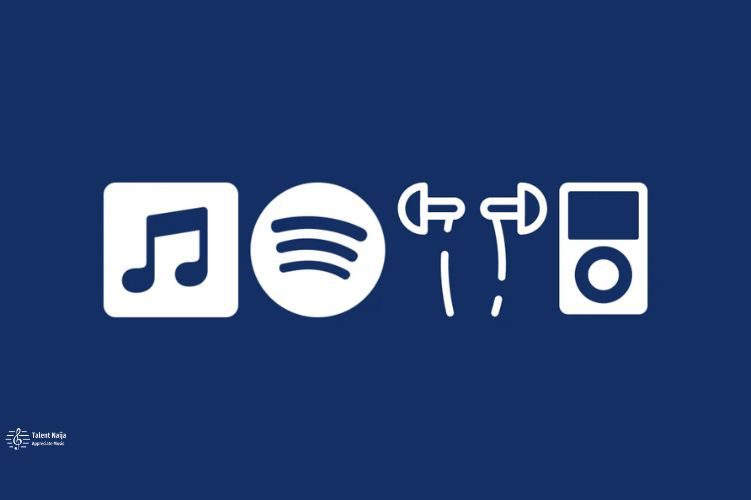As a longtime music lover who has been carefully curating playlists for over 7 years, I’ve learned that the key to creating the perfect soundtrack lies in understanding how to match songs to moods. The right tunes can energize and inspire us or provide much-needed calm when we feel anxious and overwhelmed. Read below about “How to Build the Perfect Playlist for Every Mood”.
In this blog post, I’ll share my tested tips for making customized playlists tailored to amplify and complement your different emotional states. Whether you need motivation on a long run, catharsis after a tough day, or a joyful accompaniment to a fun night out, music has the power to heighten the experience.
Table of Contents
How to Build the Perfect Playlist for Every Mood
The Basics: Know Your Music Library
First, spend some time browsing your full music library while making notes about songs that spark different emotions. Really familiarize yourself with all the tracks you have available across streaming platforms and personal collections. Listen to portions of songs you may have forgotten about. Discover new nuances even in pieces you’ve heard a thousand times.
I like to keep an ongoing spreadsheet with song titles, artists, albums, and my own descriptive tags about the mood, energy level, instruments, tempo, and more. For example, my notes might say “melancholic vocals over upbeat funk guitar riff” or “high-energy club anthem, great build-up in chorus.”
This inventory of your options makes it so much easier to pull together the perfect songs later when you have a specific situation and desired emotional outcome in mind.
Set the Vibe: Upbeat or Relaxing?
The first decision to make when creating a playlist is usually whether you want an upbeat, energizing vibe or something more down-tempo and peaceful.
Upbeat playlists tend to feature higher BPM (beats per minute) and rhythmic dance styles like pop, rock, hip hop, Latin, techno/electronica, and high-energy classic hits. The focus is on driving momentum, building excitement, and lifting moods.
Relaxing playlists generally include more acoustic instrumentation at slower tempos – genres like light rock, indie folk, soft piano, and ambient electronic music. The vibe is chill, emphasizing melody and atmosphere over propulsive dance beats.
Of course, you can also blend these energies by choosing medium-tempo songs with both groovy and mellow elements. The important thing is to decide what overall environment you want to create with your music.
Fine-Tune Based on Activities and Emotions
Once you’ve settled on the general pace and sound, consider the specific context where this playlist will be played and how you want people to feel. Tailor your song selections accordingly.
For a long road trip, I’ll design a playlistMusic Flavour Game Changer Dike that evolves from bright sing-alongs to get us pumped at the start, then builds to epic and cathartic anthems perfect for watching sunset vistas roll by. Finally, I’ll bring things down with peaceful acoustic ballads as we near journey’s end, ready for rest. The music mirrors the experience.
If I’m hosting friends for casual drinks, I may want a mostly upbeat indie pop mix – but stay away from lyrics about wild partying since it’s a relatively chill kickback. For a big dance party though, I’ll choose lyrics about cutting loose over slower dreamy songs.
Really visualize the activity where you’ll hear this playlist and how people will likely feel at each stage. What emotions do you want to tap into and enhance through your song choices? Be very intentional about this.
Layer in Variety with Thoughtful Ordering
A common playlist pitfall is accidentally slipping into monotony by not varying sounds and styles enough from track to track. Pay close attention to textures, tempos, eras, and artists as you sequence your song order.
Think about taking listeners on a journey with satisfying highs and lows. You may even want to theme different segments – like a beach party mix starting with classic surf rock before transitioning to modern tropical house.
Aim for coherence while still offering delightful surprises that refresh the ears. I also recommend placing extremely familiar pop smashes next to lesser known indie gems for balance. Give a few handpicked deep cuts a chance to shine!
Leave Them Wanting More
Be careful about overstuffing playlists just to hit some sky-high song count. Try to quit while you’re ahead at a peak emotional moment.
Resist the urge to exhaust all related song ideas in one sitting. You don’t want the energy fizzling out halfway through, with people tuning out various tracks on autopilot as they start blending together.
Sometimes restraint is the wisest path. You can always make fresh sequels or companion playlists if the vibe you’ve designed really clicks.
Trust Your Instincts
There is no single formula or magic number of songs that guarantees playlist success. Your own intuition about pacing, variety, transitions and emotional tone is the best compass.
Experiment freely, get reactions from friends, and note what song placements get the best responses in the moment. Be willing to tweak things based on real-time social field testing the more you share your playlists.
Conclusion
Stay open to sudden new song inspirations that feel destined for these mixes you’re nurturing. Many of my best playlists grew organically over weeks and months instead of being rigidly pre-planned.
Playlist creation is truly an art, not a science. Follow your passion and let those intangible sparks of audio alchemy guide you. The right musical vibe can be utterly transportive, so have fun taking listeners on these journeys! I hope you like reading “How to Build the Perfect Playlist for Every Mood”.

With a Master’s degree in Musicology and over 4+ years of experience in promoting musical talent, our author brings a blend of academic expertise and real-world insights to TalentNaija. Passionate about showcasing diverse musical genres, emerging artists, and industry trends, they provide practical tips and authentic experiences for music enthusiasts. Connect on Instagram @talentnaija_official and Facebook Talent Naija for the latest updates and inspiration.
Connect with Us:
Instagram: @talentnaija_official
Facebook: Talent Naija

